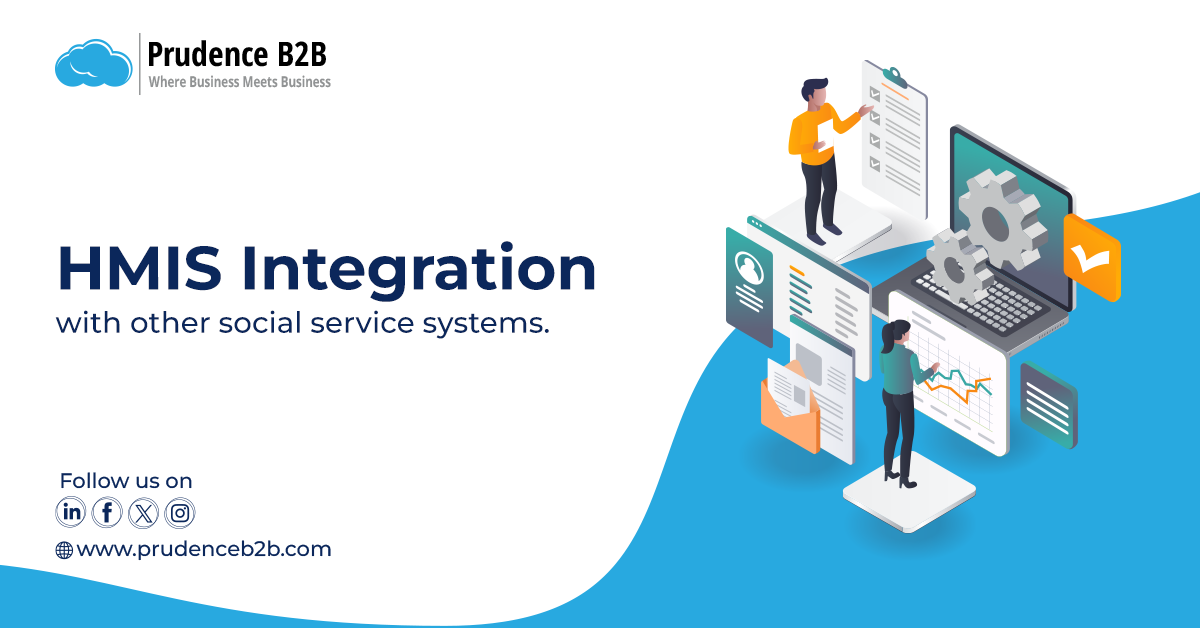HMIS Integration with other social service systems

Strong 8k brings an ultra-HD IPTV experience to your living room and your pocket.
Homelessness remains one of the most pressing social issues across the globe, affecting millions of individuals and families. While the lack of housing is often seen as the primary challenge, homelessness is deeply intertwined with other social issues, including mental health struggles, substance abuse, unemployment, and family instability. These complexities demand a more collaborative and holistic approach to care, which is where the Homeless Management Information System (HMIS) steps in. But the real magic happens when HMIS is integrated with other social service systems. Let’s dive into how this integration can help create a smoother, more connected support system for people facing homelessness.
Understanding HMIS: A Vital Tool for Support
HMIS is a powerful database used by organizations to track and manage information about homeless individuals and families. This system collects and stores important data, such as personal details, housing histories, health statuses, and services received. It's an essential tool for social service agencies, enabling them to track the needs of people experiencing homelessness and measure the effectiveness of the services provided.
However, the true potential of HMIS is unlocked when it is connected to a range of other service systems, such as healthcare, housing assistance, food programs, and mental health services. Think of it like a puzzle: each system on its own plays an important role, but when all the pieces fit together, a clearer picture of a person’s needs emerges. This integration forms a comprehensive network of care that can make a significant difference in an individual’s journey out of homelessness.
Why Is HMIS Integration So Crucial?
Homelessness is not a one-dimensional issue; it's a complex challenge involving multiple layers of need. Here are some of the key factors that contribute to the issue:
- Mental health challenges
- Physical health problems
- Substance abuse
- Lack of employment opportunities
- Family breakdowns
Each of these factors requires different kinds of services. However, they are all interconnected, and addressing just one issue in isolation often isn’t enough. HMIS integration with other social service systems allows for a more coordinated approach, ensuring that people receive the full spectrum of support they need.
How HMIS Integration Works in Practice
At its heart, HMIS integration is about creating seamless communication between various social service organizations. It’s not simply about linking databases—it's about establishing a system where service providers can share data, collaborate, and streamline their efforts. Here’s how it typically works:
Real-Time Data Sharing Across Systems
When a person seeks help from one service—be it housing, healthcare, or food assistance—their information is updated in real-time across all relevant systems. This allows service providers to see up-to-date data, helping them respond quickly and appropriately. For example, if someone enters a homeless shelter, the shelter’s staff can instantly access the person’s housing history, health records, and prior services used, creating a much more informed care plan.
Holistic Case Management
In an integrated system, case managers can monitor a person’s progress across various support channels. If someone is receiving mental health counseling, housing assistance, and healthcare, the case manager can see how these services interact and ensure there are no gaps in support. This type of coordination leads to more efficient service delivery and, ultimately, better outcomes for the person in need.
Better Service Coordination
One of the most significant benefits of HMIS integration is the improved coordination between different service providers. Instead of clients needing to explain their situation to multiple agencies, the system provides a shared view of their needs. This ensures services are delivered in a timely and organized manner, and it reduces the risk of a person falling through the cracks due to miscommunication or delays.
Enhanced Reporting and Insights
By pulling data from multiple systems, HMIS integration provides valuable insights into trends and patterns within the homeless population. It helps identify gaps in services or areas where additional resources are needed. For example, if mental health issues are prevalent among a homeless population, targeted interventions can be put in place to address this need more effectively.
Streamlined Access to Services
Integration also makes it easier for homeless individuals to access services. Whether it's healthcare, employment support, or housing, they no longer have to navigate through various organizations and fill out multiple forms. The integrated system can offer a one-stop-shop approach that significantly reduces the stress and confusion that often comes with trying to access multiple services.
The Benefits of HMIS Integration
Integrating HMIS with other social service systems offers numerous advantages for both service providers and the people they serve. Here are some of the key benefits:
Better Outcomes for Clients
With integrated services, individuals facing homelessness receive a more personalized and comprehensive support plan. This holistic approach increases the chances of successful outcomes, as individuals are supported in all aspects of their lives.
Improved Efficiency
By reducing duplication of services and ensuring that information is shared seamlessly, agencies can operate more efficiently. This allows them to serve more people, faster.
Cost Savings
When services are coordinated and not duplicated, resources are used more effectively, leading to cost savings for the agencies involved.
Informed Decision-Making
The data gathered from integrated systems allows agencies to make informed decisions, refine their strategies, and improve service delivery. Whether it’s allocating resources more effectively or developing new programs, data-driven decision-making leads to better outcomes.
Empowering Clients
HMIS integration empowers people by giving them access to a full range of services. It reduces confusion and frustration, ensuring that individuals experiencing homelessness are not left to navigate a complicated system on their own.
Looking Ahead: The Future of HMIS Integration
As technology continues to evolve, so does the potential for even deeper integration of HMIS with other social service systems. With advancements in artificial intelligence, machine learning, and cloud-based technology, there is immense potential to create an even more interconnected network of care.
At PrudenceB2B, we believe in the power of technology to bring about meaningful change. By helping organizations integrate HMIS with other social services, we can support more efficient, effective, and compassionate care for those experiencing homelessness.
Conclusion
HMIS integration with other social service systems is not just about technology; it’s about creating a compassionate, well-coordinated safety net for people in need. It’s about ensuring that no one is left behind, and that every person has access to the full spectrum of care they deserve. By breaking down silos and fostering collaboration, we can work together to create a future where homelessness is not a permanent state but a temporary hurdle on the path to stability. Let’s continue to build stronger, more connected systems—one step at a time.
Note: IndiBlogHub features both user-submitted and editorial content. We do not verify third-party contributions. Read our Disclaimer and Privacy Policyfor details.


